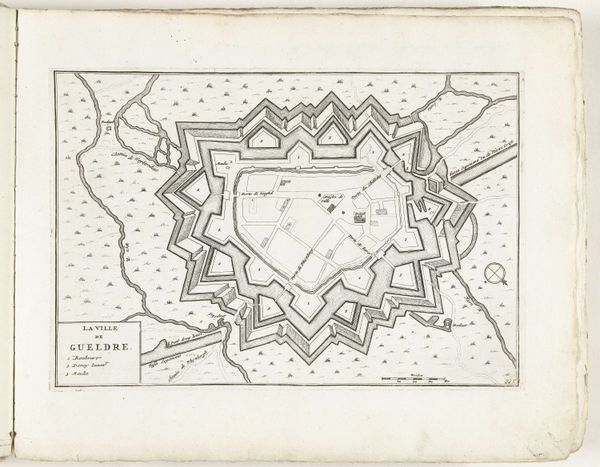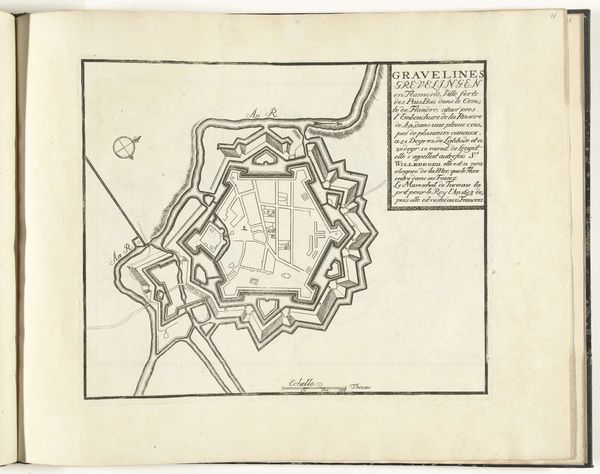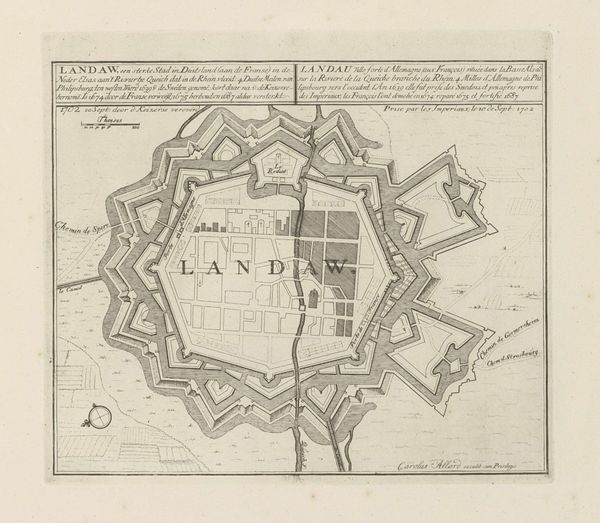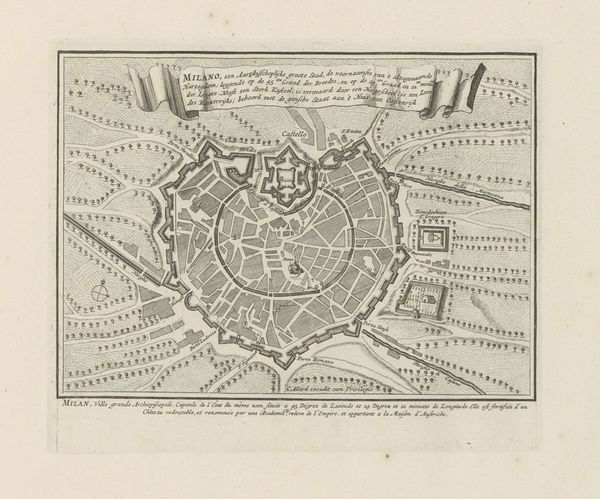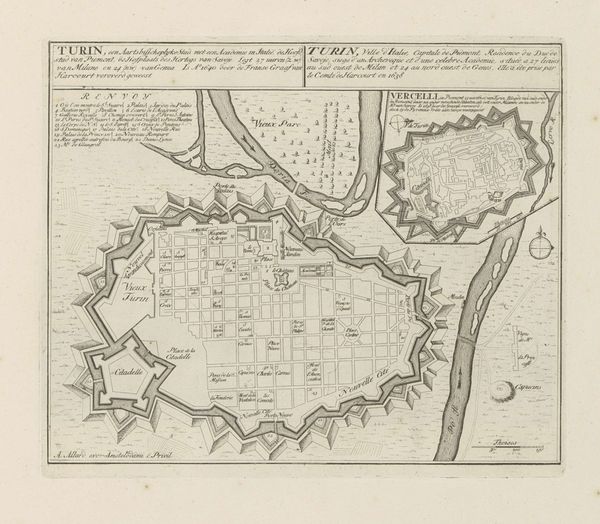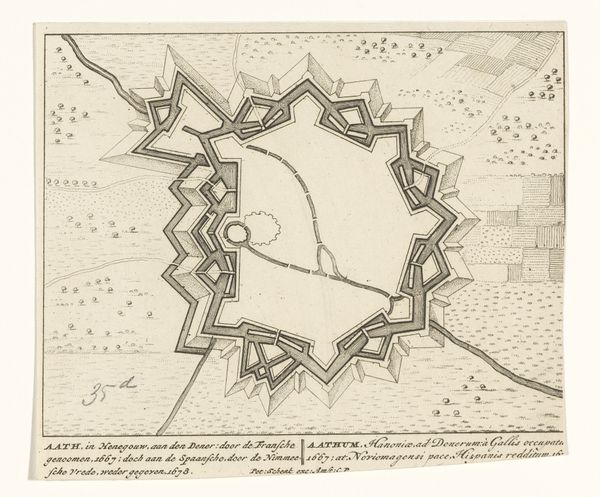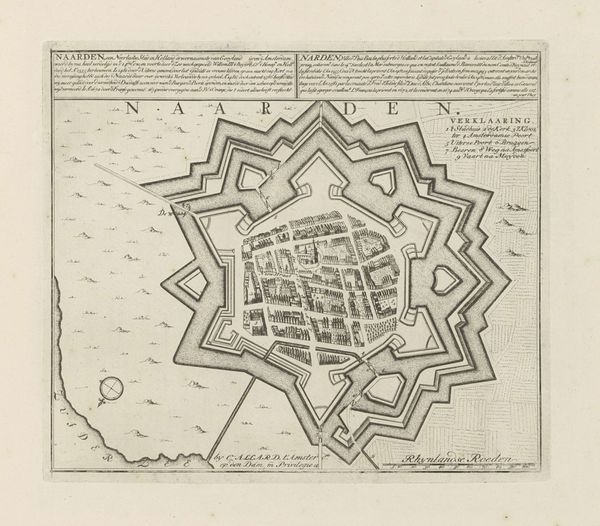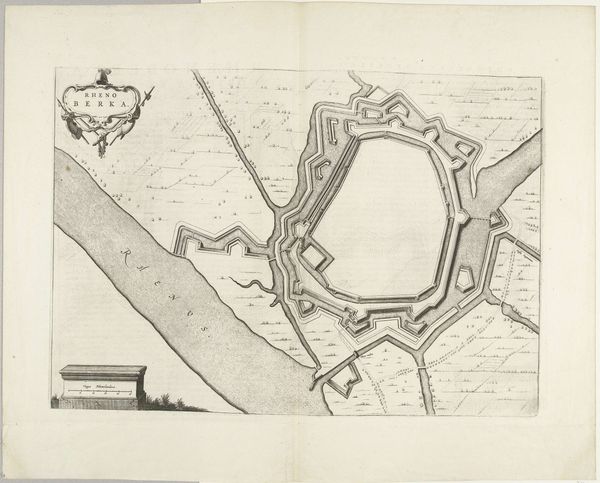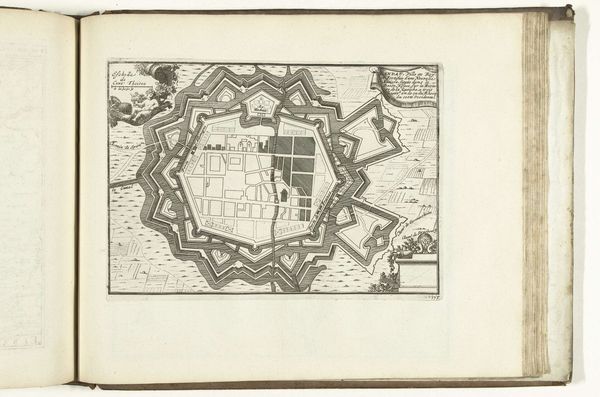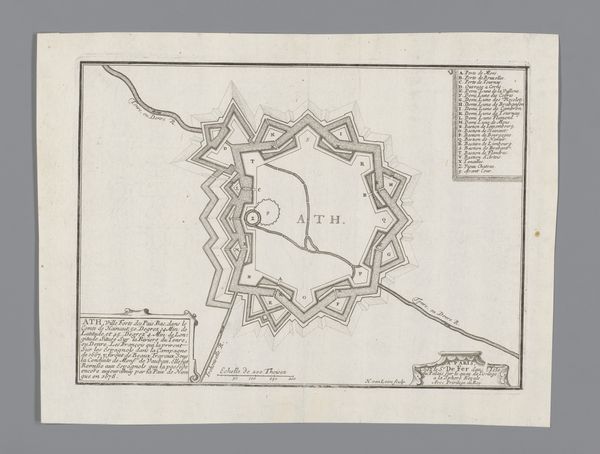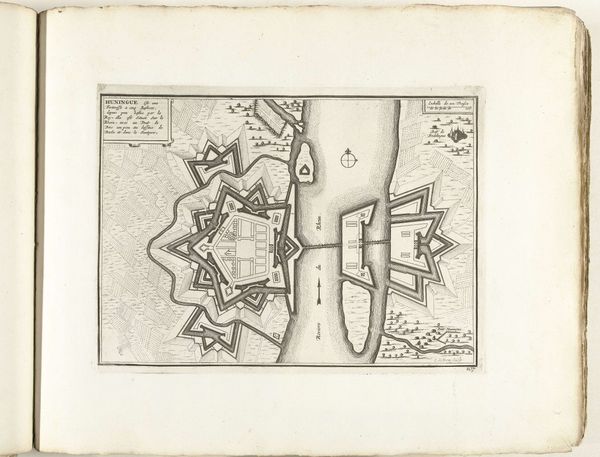
drawing, print, etching
#
drawing
# print
#
etching
#
geometric
#
cityscape
#
history-painting
Dimensions: height 235 mm, width 275 mm
Copyright: Rijks Museum: Open Domain
Curator: Alright, so before us, we have "Plattegrond van Geldern," a drawing, print, and etching by Abraham Allard, created sometime between 1703 and 1733. It’s currently held at the Rijksmuseum. Editor: Yes, that's right! It looks so precise, like a carefully planned fortress, almost a geometric jewel. What strikes me most is the elaborate system of walls and waterways surrounding the city. What do you see when you look at it? Curator: You know, it reminds me of peering into the past, trying to decipher the secrets held within its lines. The rigid geometry isn't just aesthetic; it’s a visual language speaking of power, strategy, and control. It's as though Allard isn't just showing us a map, but also the mindset of the era—always preparing for siege, perpetually at war, not just with enemies, but also with uncertainty. Does it strike you that this obsession with order might reflect some deeper anxieties of the time? Editor: Definitely. The precision suggests a desire to impose order on a chaotic world. I suppose these star-shaped fortresses were a pretty hot topic at the time? Curator: Oh, absolutely. The "star fort," as it's known, was all the rage. Designed to eliminate dead zones and maximize defensive firepower. Every angle considered. The interesting tension here, of course, is how such meticulous planning exists alongside the unpredictability of human conflict. Doesn't it remind you a little bit of chess? Strategic pieces laid out on a board of political tension? Editor: That’s a great comparison! The rigid fortifications and chess-like quality really do make it a window into the mindset of the time. Thank you! Curator: And thank you! It's fascinating how historical maps can unlock such potent stories if you only lend them your imagination!
Comments
No comments
Be the first to comment and join the conversation on the ultimate creative platform.
